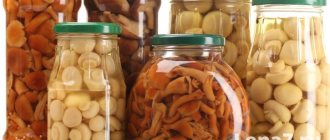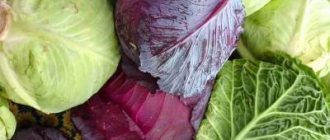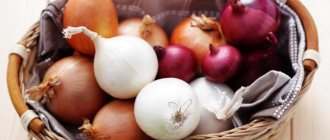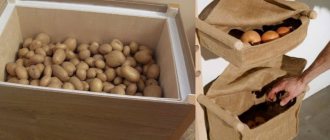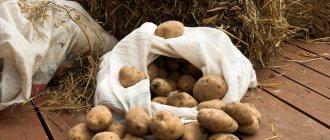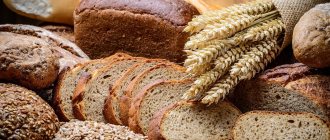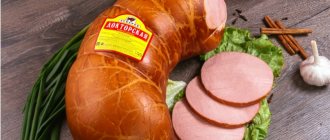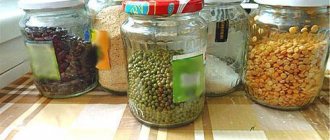Which varieties last longer?
It is better to eat salad varieties immediately, because in most cases they are not suitable for long-term storage. When choosing “long-lasting” cucumbers, it is recommended to consider popular hybrids from trusted manufacturers:
- Boy with Thumb F1 is an early-ripening, high-yielding variety of gherkins with a growing season of 40 days, resistant to diseases, and has excellent taste and aroma. It can be cultivated both in the southern regions of Russia and under more severe climatic conditions. It is best grown using the trellis method. Length – up to 11 cm. The pulp is juicy and dense. Excellent for fresh consumption and pickling.
- Alekseich F1 – early self-pollinating, growing season – 37-42 days. Miniature fruits are up to 9 cm in size and are excellent for preservation. High quality, resistance to diseases and pests, and incredible productivity make this variety indispensable for practical gardeners.
- April F1 is a mid-early parthenocarpic with a growing season of 44 to 48 days. Resistant to putrefactive bacteria and powdery mildew. It reaches 22 cm in length, has an excellent taste and shows excellent yield (up to 40 kg per 1 m2). Ideal for long-term storage and transportation, suitable for sale.
Related article: What do cucumbers like?
- Ant F1 is an early self-pollinating, bush variety with a growing season of up to 38 days. Ideal for growing in open ground. Cucumbers up to 11 cm long have a slightly sweet, pleasant taste. Not picky and unpretentious in care. Transportable and suitable for long-term storage at home.
- Rodnichok F1 is a bee-pollinated hybrid of the mid-early type with a growing period of 50 days. Resistant to diseases. Productivity reaches 25 kg per 1 m2. A universal variety used on an industrial scale.
- The secret of the F1 company is a shade-tolerant parthenocarpic hybrid with seeds of high germination. The 14-centimeter fruits are used for making salads and pickling. Suitable for long-term cultivation in greenhouse conditions.
The following varieties also have excellent keeping quality:
- Kharkovsky;
- Non-feminine;
- Competitor;
- Parade;
- Sadko;
- Bush.
Winter preparations: Cossack hangover cucumbers
It is worth focusing on the following criteria for choosing fresh cucumbers for storing at home:
- vegetables must be fresh - as few hours as possible should pass from the time of collection to storage;
- in the case of purchased ones, you should carefully inspect each fruit. If among several kilograms one turns out to be rotten or limp, then it is better not to make a purchase;
- store only clean and dry vegetables;
- there should be no visible damage on the skin;
- avoid watery and overgrown fruits with thin skin;
- do not choose greenhouse, fast-ripening varieties - they are stored for no more than 4 days.
Prussic acid in pits and other disorders
It’s worth drawing an important watershed right away. If we are talking about jam from stone fruits ( regular and felt cherries, plums, apricots
), then it must be eaten during the first year. Otherwise, hydrocyanic acid can have an extremely negative impact on health.
It’s easier with the rest of the blanks:
- Make sure there are no rust stains on the inside of the metal covers.
- If the lids are swollen, the products cannot be eaten.
- Pay attention to the brine. It must be absolutely transparent.
- Any mold, even located only in the upper part of the jar, is already a reason to completely abandon the workpiece. If you still want to eat it, it is important not only to remove the damaged part that is visible to the eye, but also to capture the normal-looking base.
If the violations described above do not occur, the hermetically sealed preparations can continue to be eaten. Moreover, it doesn’t happen from year to year. What if the next few years turn out to be poor harvests? You will have good insurance in this case.
How to keep cucumbers fresh longer without refrigeration
There are ways that people kept vegetables fresh before the advent of refrigerators in their homes. Now they seem unusual, but cucumbers are stored this way from a month to six months.
In sand
Thanks to sand, you can save a larger volume of crops without using a refrigerator. The fruits are placed in a container and gradually covered with clean sand so that between them there is a layer of sand without gaps. The container with sand is placed in a cold place, for example, in the basement.
Vegetables will be stored even longer if you bury the container in the ground.
The shelf life in this way can reach several months.
In the well
If you have your own well on the property, a bucket of cucumbers covered with natural fabric is immersed in 1-2 cm of water.
In cabbage
For growing and longer storage, cucumbers are planted between rows of cabbage. The whip with the ovary appearing on it is placed between the leaves of cabbage. Thus, cucumbers grow inside the cabbage, and then are stored in it in a cool place.
In vinegar
Vinegar is poured into a clean enamel bowl with a layer of 3 mm, a colander or wire rack is placed inside, where the cucumbers are placed. The fruits should not touch the vinegar. Cover the container with a lid and store it in the cold.
In a barrel
A wooden barrel is an excellent storage for vegetables. The wood from which it is made must be dense (it is better to take oak). The fruits are tightly packed into the barrel and hermetically sealed. After that, such a container is lowered to the bottom of the river and firmly fixed to protect it from the current.
If you choose the right barrel made of wood that is not prone to rotting, cucumbers will remain fresh for several months.
In the box
The most common way is to place the cucumbers in a box, box or any other container with walls that allow air to pass through.
It is necessary to carefully place fresh dry fruits inside so that they minimally touch each other. Vegetables should be stored at a temperature no higher than 15 degrees and at high humidity, for example, in the basement. Under such conditions, cucumbers can remain fresh for about ten days.
In a clay pot
The harvest is stored well in clay containers. A thin layer of sand is poured into the bottom of the container, and then a layer of cucumbers is laid out and sand is poured on top again. This pot can be stored both in the refrigerator and in the basement.
Canning by lactic acid fermentation
Store salted products at temperatures from -1 to 10°. The higher the temperature, the shorter the shelf life; elevated temperatures also improve conditions for the development of side microflora, which deteriorates the quality of the product. Therefore, the best temperature for storage is considered to be from -1 to 1°.
During fermentation and storage, pickled cucumbers and tomatoes lose weight due to the transfer of soluble substances into the brine and a decrease in the volume of the fruit. When storing pickled cucumbers and tomatoes in non-refrigerated warehouses for up to 30 days and in refrigerated warehouses for up to 60 days, natural loss is assumed to be from 4 to 7%, depending on the variety and storage conditions.
In warehouses with artificial cooling and in various types of glaciers and ice warehouses, barrels of products are placed lying or standing, but in both cases the tongue hole should be at the top. Oak barrels are stacked lying down (up to 4-6 rows in height), laying boards or slats between the rows. In glaciers, trenches and piles, it is advisable to fill the barrels with fine ice.
In both pile and trench storage, barrels and ice are insulated from the effects of external temperatures with straw, sawdust and earth.
At one fruit and vegetable plant, barrels of pickles are stored in the lake. This turned out to be cheaper than storing in warehouses or glaciers.
Piles are driven into the bottom of the lake, between which a wire (cable) is stretched. A set of barrels, tied with wire, consists of four barrels with cucumbers and one rejected barrel filled with sand or gravel (weight for sinking the set). Such a set of barrels is unloaded from the pier into the water, delivered to the site by motor boat and secured to a wire (cable).
With this storage method, high quality products are maintained until the ice melts in the lake.
Quality of finished products.
In accordance with the current GOST, the salt content in the pickled cucumber brine should be from 3 to 5%, and the total acidity, counting lactic acid, for the 1st grade from 0.6 to 1.2%, for the 2nd - from 0 .6 to 1.4%. The weight of cucumbers is at least 53% of the contents of the container.
It must be taken into account that pickles are sometimes greatly softened by the action of pectolytic enzymes of microorganisms. This can be eliminated if the product is stored in a well-closed container and at a temperature close to 0°.
How to store pickles?
First of all, you need to remember that they should be stored in a room where the temperature is approximately +1 to -2 degrees. Too high a temperature will damage the pickles. The jars should not be exposed to sunlight. It will ruin the taste of the food. And such an unpleasant thing as cans exploding can happen. The fact is that when heated, air in sealed containers expands
Therefore, due to the warm rays of the sun, cans can explode. It is also important to check that they are well rolled before storing. If the vessels are not airtight, air will penetrate into them and the twists will quickly deteriorate. If the twists are stored in the cellar, it is important to ensure that the temperature does not drop below -1 degree. It is also worth treating the room with an antifungal solution from time to time. When storing twists in the apartment, you need to keep them on the balcony, in the pantry or in the refrigerator. Products in jars can be stored for about a year
You can also leave them for the second year, but before consuming it is worth checking to see if there is any fungus or infection in the food. After opening the jar, it is not recommended to store cucumbers for more than 2 weeks. To increase the shelf life of cucumbers, you can freeze them. This is one way to preserve cucumbers without brine. Before freezing, you need to wash the vegetables and then dry them, carefully placing them on a towel. Then you need to put them in a bag and put them in the freezer. You can't eat vegetables after this. But it can be used for cooking. You can store them without brine, but not longer than 24 hours. To do this, you need to put them in a plastic bag and put them in the refrigerator. Pickled cucumbers can be stored in the cellar for about 2 years. But in an apartment their lifespan decreases. Some famous chefs give advice: throw a couple of black peppercorns into a vessel with vegetables. This will not only add piquancy to the taste, but will also create additional sterilization of the vessel.
Storing cucumbers
Storage conditions for cucumbers
Without any tricks, cucumbers will last 5–7 days. But even here it is important to follow a number of rules.
1. Cucumbers must be fresh. Picked from the garden and straight into the refrigerator. The longer they stay warm, the less they stay in the refrigerator.
2. Cucumbers must be clean and dry. If soil is stuck to the fruits or they are wet, they will not last long: dirt and moisture are an ideal environment for the development of rot.
3. Cucumbers must be whole. Dents, scratches, chips and other damage lead to the fact that the fruits quickly deteriorate.
4. Cucumbers must be thick-skinned. Thin-skinned varieties do not last long. As a rule, these are early cucumbers and are intended for salads. But thick-skinned greens can last much longer.
Shelf life of cucumbers
Cucumber storage temperature
Most housewives put cucumbers in the refrigerator. And after a few days they become soft, watery and covered with spots, or even mucus. And all because the refrigerator is not suitable for them - the fruits simply freeze there, because they are very heat-loving.
However, at room temperature they also do not last long - they wither.
The ideal temperature for storing cucumbers is about 15 °C.
Methods for storing cucumbers in an apartment
In the package. Wrap the cucumbers in paper towels - each fruit separately, and then put them in a plastic bag and put them in the refrigerator. The paper will protect them from the cold. In this form, the fruits are stored for 15 days.
In egg white. Wash the fruits with boiled water, dry and coat with egg white. When it dries, a thin film forms on the surface of the fruit. Now put the cucumbers in a wooden box and send them to a cool, dark place. No box? Then tie strings to the stalks and hang them - in the same conditions.
The protein shell allows cucumbers to breathe, but does not allow moisture to pass through - they do not wither longer. Remains fresh for 30–40 days.
In a waxy shell. Wipe the cucumbers dry with a clean cloth, rub with a wax candle and place in the refrigerator. The wax will protect the fruits from the cold and delay the evaporation of moisture - the fruits are thus preserved. They are stored for 35 days.
In a jar without oxygen. Wipe the cucumbers dry and fill a sterile 3-liter jar 3/4 full with them. Place a piece of paraffin candle on top and light it. And then, without blowing out the candle, cover the jar with a metal lid and roll it up.
The candle will burn as long as there is oxygen in the jar. As soon as it ends, the candle will go out. In effect, a vacuum is created. After this, the jar can be sent to the cellar or refrigerator. In this form, cucumbers will last 120 days.
Recipes for lightly salted cucumbers
Crispy cucumbers are prepared a day in advance and for the winter, in a bag, in mineral water and in hot brine. There are hundreds of options for marinades: with herbs, garlic, vinegar and without it. But there are several ingredients that are always taken - the vegetables themselves, salt, horseradish. The more horseradish, the crispier the fruits. A few tips for those who don’t yet know how to make lightly salted cucumbers at home:
- A classic set of herbs for marinade includes: parsley, dill, currant or cherry leaves, horseradish root and leaves, garlic. Add spices - peppercorns, mustard, cloves. But such a set can be changed at will. Parsley that is too fragrant is removed because not everyone likes the smell. People with gastrointestinal problems do not add mustard - it may cause stomach upset.
- Spices are added fresh to the pickling container or blanched for 5 minutes in boiling water, and then poured with hot brine.
- If you make lightly salted cucumbers in a jar using a cold method, the cooking process lasts longer and the shelf life is also longer. The hot version is suitable for quick cooking or for wrapping before winter.
- For recipes for long-term storage, take dense and fresh vegetables without defects. Quick options include any fruit. Defects are trimmed, vegetables that are too large are cut into pieces.
How to make lightly salted cucumbers in a jar?
There are many cooking options, here are a few recipes on how to make delicious lightly salted cucumbers in a jar. First option:
- Take the number of cucumbers that will fit into a 3 liter jar. Peel 5 cloves of garlic, 3 tbsp. l. salt, 2 dill umbrellas and water.
- Cucumbers are washed, the ends are trimmed, and do not soak. Greens and garlic are placed at the bottom of the jar, then cucumbers are stuffed, as when pickling for the winter. Place salt, an umbrella of dill on top, and pour boiling water over it.
- Seal the jar with a plastic lid and shake to disperse the salt. Allow the brine to cool and put it in the cold. Ready in 15 hours.
Second option:
- Take 5-7 cucumbers or as many as will fit in a liter jar, 5 cherry leaves, 1 tbsp. l. salt, 1 sprig of dill and 1 umbrella of dill, 1 horseradish leaf.
- Washed cucumbers are placed vertically in a jar, spices are placed between them, salt is diluted in boiling water, and the marinade is poured over the vegetables.
- Close the jar and leave to cool. Then put it in the refrigerator.
- Ready in 8 hours (overnight).
Making lightly salted cucumbers in a saucepan
The option of salting in a pan is the simplest and fastest. It is made cold or hot, depending on the required feed speed. There are many ways to make lightly salted cucumbers in a saucepan, here are a few proven ones:
- Wash the vegetables and trim the ends. Place 1 leaf of horseradish and 2 cloves of garlic on the bottom of the dish. On top there is a row of fruits, then again spices - a row of fruits. Place the cucumbers so that there is a distance of 2-2.5 cm to the top of the pan. Dilute 2 tbsp in 2 liters of boiling water. l. salt, 0.5 tsp. sugar, pour over vegetables. A horseradish leaf and an umbrella of dill are placed on top. Turn the plate over, cover the fruits and press down with a jar of water. Ready in 8 hours (overnight).
- For 1 kg of fruit take 1 liter of water, 1 tbsp. l. salt, 0.5 tsp. sugar, garlic, dill, horseradish leaves. Vegetables are layered with spices. Salt and sugar are diluted in boiling water and cooled. Pour over the fruits, cover with a plate with a load. Readiness is checked after a day. Vegetables are left warm or put in the cold - as desired. The chilled version of cooking requires more time for salting.
- Recipe for a large company. Place horseradish leaves, an umbrella of dill, and a head of garlic, mashed with 1 tbsp, at the bottom of a 5-liter saucepan. l. salt. On top there is a row of cucumbers, then again horseradish, garlic with salt, fruits. So spread it to the edge of the pan. The top layer is horseradish and garlic. A total of 5 layers are made. Pour 3 liters of boiling water into a large bowl, add 1 tbsp. l. sugar, 3 peppercorns, a pinch of grated nutmeg. Stir and pour boiling water into the cucumbers. The mass is pressed down with a load. Readiness is checked after 10 hours.
https://youtube.com/watch?v=cuuQenhPHnY
Useful tips
The following recommendations will help extend the shelf life of lightly salted cucumbers:
- It is better to choose vegetables of the same size so that they are salted more evenly;
- cucumbers with cut ends are quickly salted, but are more likely to become unusable;
- If the hot pour method is used, the shelf life will be reduced.
Attention! Housewives say that you can increase the shelf life of vegetables by adding black peppercorns to the brine.
How to store pickles in an apartment
For a large number of snacks, there may not be enough space with optimal temperature and humidity. Taking this into account, even at the stage of pickling vegetables, fruits that are least demanding of storage conditions are selected. The preparation technology is also adjusted if the pickles cannot be placed in the cellar or basement.
Salting nuances
How to pickle cucumbers so that you can store them for a long time? When heat treatment, some rules are followed:
- For pickling, choose the freshest fruits, preferably picked from the garden on the same day. They should have a uniform green color and thick skin. Vegetables that are too light, have yellow marks, or are already overripe are not suitable.
- Cucumbers are soaked in cold water (2–12 hours depending on the intensity of bitterness in the fruit).
- They prefer distilled or spring water; do not use running water with a high chlorine content.
- Vegetables of the same size are placed in the jar to distribute the brine evenly.
- The containers themselves must be sterilized.
- Opened jars are kept in the refrigerator for no more than 72 hours.
In order to have time to eat all the cucumbers and prevent them from fermenting, jars with a volume of no more than 1-2 liters are used for pickling.
By the way! The most suitable hybrids and varieties of cucumbers for long-term storage are Rodnichok and Nezhensky.
Terms and conditions of storage
, certain conditions and storage periods are observed for all pickles
- At a temperature of -1...+4°C and a relative humidity of 80–90%, vegetables can be stored for no more than 8-9 months.
- In plastic or plastic bags, the maximum possible period is 1–3 days.
- Opened jars of pickled cucumbers cannot be stored for long periods of time. It is better to chop the remaining vegetables and store them in the freezer.
- In the room itself, maintain a constant temperature and humidity, prevent direct sunlight, otherwise the snack will quickly ferment.
Optimal conditions for such cucumbers are from -1°C to +5°C in a dark, well-ventilated room. Vegetables cannot be stored at temperatures above +10°C.
It can be useful:
What to do if the cucumbers in the jar become cloudy
Why do jars of cucumbers explode?
How to remove bitterness from cucumbers
How long can pickles be stored in the refrigerator?
How long can pickles be stored in the refrigerator?
We are interested in the shelf life of an open jar of pickles at +5..+9C. The term itself, not signs of damage. We want to stretch out the pleasure, and not cram everything into ourselves at once, so as not to spoil it.
I found this on the Internet:
A sign of spoilage of pickles is cloudiness of the brine or swelling of the lid.
To prevent the product from spoiling for as long as possible after opening the jar, you should not remove anything from it with dirty hands. Opened jars of pickles can be stored in the refrigerator for no more than two weeks.
Lightly salted cucumbers can be stored in the refrigerator for a month if black peppercorns were used in preparation.
So 2 days or 2 months - the difference is fundamental. Who to believe?
Re: How long can pickles be stored in the refrigerator?
Depends on communication with them. They may become cloudy on the third day, or they may live for two months. We open jars at events and eat them almost in one sitting. Leftovers rarely last longer than a week. Therefore, I cannot confidently advise - there is too little experience in long-term storage. But when I was alone at home, it happened.
When I opened the jar, I tried to immediately prevent the problems that I personally encountered.
1. I immediately throw out all the grass.
2. Pour boiling water over liters.
3. With absolutely clean hands, a spoon, in the kitchen where there are no spores of moldy bread, cottage cheese and other micro-living creatures, I separate good tomatoes and good cucumbers. When transferring, do not damage, tear or pierce the skins. It turns out 2 cans of the highest grade. I fill it with brine. I cut a clove of garlic in half and smear the cut part around the neck and metal lid. I cover the jars and place them in a zone around +2C.
4. I leave the rest in the original jar, if it doesn’t fit, I pour it into a liter. I eat this jar first in the first week.
Open long-lasting jars only to remove them with a clean spoon (see point 3.). Close and immediately put in the refrigerator. The less contact they have with the outside world, the longer they last without becoming cloudy or moldy. It lasted two months or more.
We recommend reading: How long does Ginger Lemon Honey Mixture last in the refrigerator?
The most dangerous thing is to violate clause 3. This happens in a trivial way. There wasn't enough food. I wanted more. She grabbed the jar with dirty hands, stained the neck with grease, took the fork by the tines with dirty hands, reached into the jar with the fork, stabbed it, dropped it back, and dragged it out. I left the jar open on the table next to the food. I remembered her when I washed the dishes. She took the lid with dirty hands. Closed it. After three days it may become cloudy.
It's even more difficult with men. They can fish out tomatoes with their hands and a fork that they just used to eat pasta naval style. UzhOs.
What's in the refrigerator with the pickles? I put a plate with leftovers there for a couple of hours, poorly closed, and it exudes lush microflora.
As you can see, there are a lot of nuances. I didn’t delve into them, because the problem is not urgent, and when the need arises to prolong the pleasure, I act according to the described algorithm. Especially point 3 every time you open a can! So far the algorithm has not failed. And after two months, the brine remained clear and the cucumbers remained crunchy.
A secluded place: where is the best place to put home preserves?
Usually, in order to store homemade preparations, housewives use either a cellar or a pantry. Often jars of preserved food are stored in the garage, if there is one. But even if the owner has neither a garage nor a cellar at her disposal, she always finds a secluded corner in the apartment.
Cellar
If you live in a private house, then you probably have a underground floor - like our ancestors. A room under the house is a great place to store cans of canned food. In particular, because the microclimate of the cellar meets the requirements stated above, that is, temperature and humidity levels.
- To be completely sure that the jars will not freeze, sometimes it is necessary to insulate the underground from the inside.
- In order for the process of storing homemade products to comply as much as possible with generally accepted norms and rules, it is necessary to improve the ventilation in the basement.
- To prevent fungus from growing in the cellar, and to prevent mold from creeping along the walls and shelves on which the jars stand, the internal surfaces of the subfloor must be regularly (once or twice a year) treated with copper sulfate.
In principle, if in the cellar you only store jars sealed with tin lids, they are not afraid of mold. But if there are containers with nylon lids in the underground, under which pickles and meat products (for example, salted lard or sauerkraut) are waiting in the wings, processing must be carried out. Otherwise, the fungus will penetrate inside and create pathogenic flora inside the glass container.
Apartment
Finding a place to store canned goods in a city apartment is a big question. It all depends on whether your apartment has a balcony. Or maybe there is a loggia instead of a balcony? Or at least a small storage room? Some houses have special niches under the kitchen window sill, made specifically for orderly storing jars of cucumbers and tomatoes. We will talk about storing cans on the balcony separately. In the meantime, let’s discuss the available places for storing preserves if there is no balcony in the house.
- Preservation should not be exposed to the sun's rays, so the place where the jars are stored should be dark. The role of such a location can be played by a kitchen cabinet with doors, remote from the heating radiator.
- If the apartment does not have a storage room, you can make a cabinet yourself using drywall and hinged doors. The optimal width is slightly larger than the diameter of a three-liter jar. Therefore, the cabinet will be quite narrow. Look around: there is probably a good place for it in your apartment.
- Pickled vegetables can be stored on the mezzanine, if you have one in your apartment. As a last resort, they can be placed behind the sofa or under the bed. The main thing is to stay away from the heating system.
As for pickles and meat products sealed under a tin lid, it is better to send them to the bottom shelf of the refrigerator.
Balcony
If the apartment has a balcony, all issues related to storing cans of preserves are immediately eliminated. You can install a rack on the balcony, equip it with hinged doors or a bamboo curtain that rises up and, if necessary, moves down, and put all the cans you have in stock there.
If there is a radiator on the balcony, it is very important that it has a temperature regulator or shut-off valve so that you can regulate the microclimate in the room. You cannot store jars on an unglazed balcony during the winter. Why - we already wrote above when we talked about how low temperatures affect the contents of glass containers. The balcony is often used for drying clothes
Try to either not dry clothes on the balcony at all in winter by purchasing a special dryer and installing it in the room, or constantly ventilate the room so that it is not too humid. Do not store fermented foods on the balcony during cold and hot periods. At this time, it is better to put them in the refrigerator.
Thermal insulation is the only, but mandatory, condition for storing preserved food on the balcony during the frosty season.
LiveInternetLiveInternet
—Categories
- sweet life (3173)
- knitting (3083)
- to the delight of meat eaters (2695)
- sore point (2376)
- amazing baked goods (2158)
- I will be better. (1997)
- let's have a bite (1899)
- hit the vegetables (1443)
- cellar (1285)
- tips for life (1155)
- not a day without salad (1010)
- unusual dessert (756)
- fish day (718)
- whether in the garden or in the vegetable garden. (707)
- poetry of colors (652)
- sewing and cutting (483)
- holiday (459)
- alluring world of flowers (422)
- I will lose weight 100% (412)
- what's first? (362)
- the pain of the soul flowed onto the paper (337)
- handmade (304)
- music inside us (297)
- interesting story (274)
- wine cellar (252)
- please speak (236)
- interior (156)
- we fast tasty, satisfyingly, with pleasure (151)
- PunchMorsCocktail (145)
- books, films (125)
- like an echo of days long gone (photo) (113)
- pizzeria at home (105)
- bread is the head of everything (96)
- tea break (74)
- a thought appeared (73)
- coffee aromas (73)
- cooking from. from appetizer to dessert (57)
- We teach ourselves (32)
- in palms - crumbs (17)
- computer help (4)
Cold pickling of cucumbers in jars for the winter
Fermenting (salting) cucumbers using a simple salt solution without boiling and sterilization is easy and does not take much time.
Important! Yellowish and soft cucumbers indicate that such a product has been spoiled. Copies with defects, large sizes and yellowness should be rejected
Recipe No. 1
Simple recipe
Cucumbers according to this hassle-free recipe can be consumed within three days.
Steps 5 ingredients
- cucumbers 1.5–2 kg
- garlic 3–4 pcs.
- salt 3 tbsp. l. with a slide
- black pepper (peas) 6–8 pcs.
- dill umbrellas, cherry and horseradish leaves, chili to taste
- Peel, wash and coarsely chop the garlic. Wash the greens and leaves.
- Place spices and some chopped garlic on the bottom of the prepared container.
- Place the soaked cucumbers in jars, sprinkling the layers with garlic. Laying should be done tightly, but not compacted.
- Dissolve salt in purified water and fill the container with the resulting brine.
- Cover with a nylon lid and keep at room temperature for three days or place in the basement.
Recipe No. 2
With mustard, like barrels
This recipe from our grandmothers will help you make the same pickling in glassware as in barrels. It uses mustard, which gives the greens a spicy taste, and most importantly, they turn out crispy.
Ingredients for 5-6 3 liter cans:
You will be interested to know about cold pickling of cucumbers with mustard for the winter.
Steps 9 ingredients
- cucumbers 9–10 kg
- heads of garlic 2 pcs.
- dill (in umbrellas) 3–4 pcs.
- horseradish (root) 1 pc.
- horseradish leaves to taste
- cherry leaves 50–70 pcs.
- mustard (powder) ½ cup
- water 9 l
- salt 700–900 g
- Peel and wash the garlic and horseradish root. Next, the garlic can be cut into slices, and the horseradish into large strips.
- Wash and dry the greens and leaves.
- Place some of the spices on the bottom of the jars. Place a layer of cucumbers on them, and then put some of the spices on top again. So, you should lay out the fruits to the end of the jar, laying them out with herbs and garlic, sprinkling them with mustard.
- Dissolve salt in clean cold water.
- Fill the jars to the top with brine, close the lid and leave to ferment.
- It is recommended to periodically remove the lids and rinse them with hot water.
- When the solution becomes cloudy, you need to move the preservation to the basement or cellar.
Recipe No. 3
Crispy cucumbers under a nylon lid
In most modern recipes with natural fermentation, the jars are closed with ordinary nylon lids.
Did you know? During the fermentation process, lactic acid appears from carbohydrates due to the influence of lactic acid bacteria, which prevents the development of foreign microflora. To delay pathogenic flora, add salt - 5% brine, and for fermentation in its own juice, take 1.5-2% of the weight of the fruit.
Steps 6 ingredients
- cucumbers 2–3 kg
- garlic 3-4 cloves
- dill 1 bunch
- horseradish leaves 1 pc.
- cherry leaves 6 pcs.
- salt 2 tbsp. l.
- Peel and wash the garlic. Wash the greens and leaves.
- Place leaves and garlic on the bottom of clean jars. Then lay out rows of prepared cucumbers, interspersing them with sprigs of dill and garlic.
- Mix salt in a glass of water and pour into a container with fruits. Then add water up to the neck.
- Cover with a nylon lid and place in a dark place at room temperature for fermentation. After five days, vegetables can already be consumed.
Recipe No. 4
Under the iron cover
Pickled cucumbers can be rolled up with a tin lid for preservation. This recipe is notable for the fact that such a fermented dish can be stored for a long time at room temperature.
Important! The presence of cloudy brine in a fermented product is a normal sign of natural fermentation. Steps 9 ingredients
Steps 9 ingredients
- cucumbers 3 kg
- garlic 3 cloves
- dill 3–4 sprigs
- horseradish (root) 1 pc.
- blackcurrant leaves 6 pcs.
- bay leaf 2 pcs.
- salt 1.5 tbsp. l.
- water 1 l
- black pepper (peas), cloves to taste
- Peel, wash and chop the garlic and horseradish. Wash and dry the dill and leaves.
- Place spices at the bottom of the basin, and then place the prepared fruits all the way to the top.
- Dilute salt in water, pour brine over the fruits and put pressure on top.
- After about 5 days, remove the cucumbers from the brine and rinse in water salted according to the concentration of the brine, and then place on a towel to dry.
- Remove the foam from the brine and boil for 2–3 minutes.
- Place the cucumbers in sterile jars and pour boiling brine over them.
- Leave for 5-6 minutes, then pour the brine back into the pan and boil again.
- Pour the brine back into the container with the fruit and roll it up.
